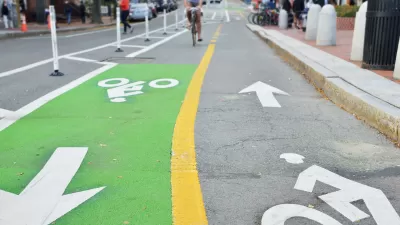In a globalized world, China's economic, environmental and urban development has implications for us all, posits Henry M. Paulson Jr. The problems the country faces, and any potential solutions, revolve around its approach to urbanization.
According to Paulson, the two pillars of growth that have driven China's economic emergence and global prosperity - investment and exports - are "delivering diminishing returns," He proposes that China adopt a new model for future success, “one that relies on consumption to generate growth, while addressing debt and broadening the use of sustainable energy and environmental practices.” Amid continued urbanization, the country's cities are key to this transformation.
Paulson highlights problems with China's local governance, construction industries and environmental factors, and illustrates how these affect the rest of world. For example, he points out, “[e]xperts found that dirty air from China contributed up to 20 percent of the ground-level pollution on the American West Coast in 2010.” China's air quality will only worsen as more of the hundreds of millions of Chinese consumers begin to own cars. To give a sense of its scale, Paulson writes, “[b]y 2025, China is projected to have a staggering 200 cities with populations over one million. America has just nine.”
For Paulson, cities are at the root of China's problems, as well as the source for solutions, especially now, as it experiences “its most severe economic downturn in decades." Chinese cities are home to hundreds of millions of consumers, often plagued by “debt, corruption and dissent," and responsible for producing “monster traffic jams and syrocketing pollution,” he explains. But, if China embraces new approaches and tools, including "instruction in sustainable practices for government leaders, public education in environmental issues and specialized training for the country’s urban planners,” it may be able to address the many issues it faces as it continues to urbanize.
FULL STORY: How Cities Can Save China

Alabama: Trump Terminates Settlements for Black Communities Harmed By Raw Sewage
Trump deemed the landmark civil rights agreement “illegal DEI and environmental justice policy.”

Study: Maui’s Plan to Convert Vacation Rentals to Long-Term Housing Could Cause Nearly $1 Billion Economic Loss
The plan would reduce visitor accommodation by 25% resulting in 1,900 jobs lost.

Planetizen Federal Action Tracker
A weekly monitor of how Trump’s orders and actions are impacting planners and planning in America.

Paris Bike Boom Leads to Steep Drop in Air Pollution
The French city’s air quality has improved dramatically in the past 20 years, coinciding with a growth in cycling.

Why Housing Costs More to Build in California Than in Texas
Hard costs like labor and materials combined with ‘soft’ costs such as permitting make building in the San Francisco Bay Area almost three times as costly as in Texas cities.

San Diego County Sees a Rise in Urban Coyotes
San Diego County experiences a rise in urban coyotes, as sightings become prevalent throughout its urban neighbourhoods and surrounding areas.
Urban Design for Planners 1: Software Tools
This six-course series explores essential urban design concepts using open source software and equips planners with the tools they need to participate fully in the urban design process.
Planning for Universal Design
Learn the tools for implementing Universal Design in planning regulations.
Smith Gee Studio
Alamo Area Metropolitan Planning Organization
City of Santa Clarita
Institute for Housing and Urban Development Studies (IHS)
City of Grandview
Harvard GSD Executive Education
Toledo-Lucas County Plan Commissions
Salt Lake City
NYU Wagner Graduate School of Public Service





























